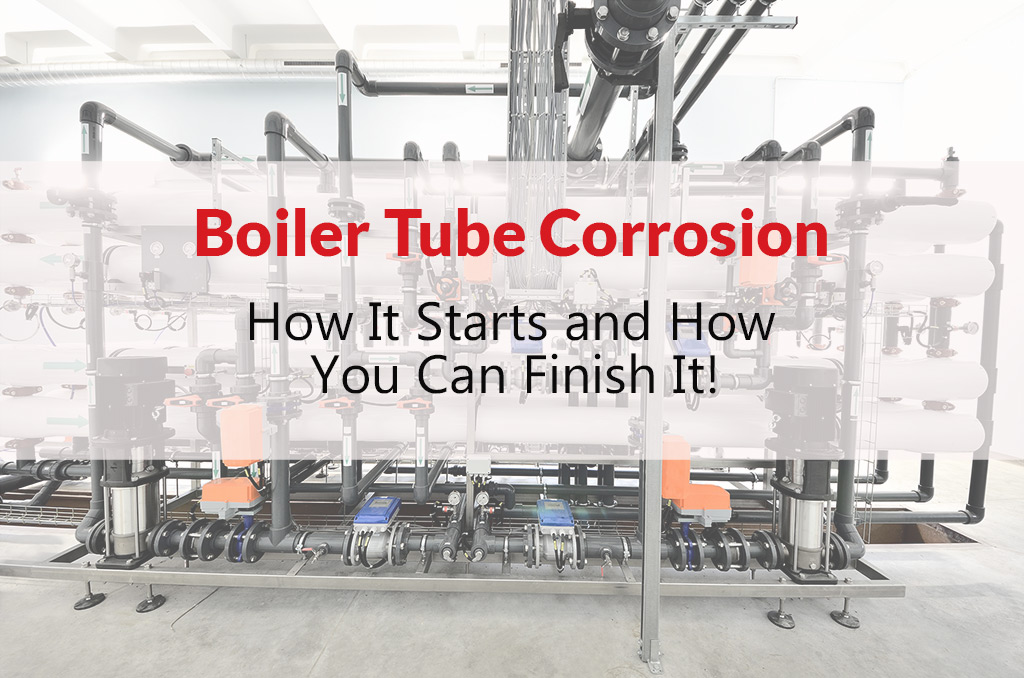Boiler system corrosion is caused by the interaction of water chemistry, the environment of the facility, operation procedures, and materials used in the construction of the system. It costs the industry billions of dollars every year through failures and reduced performance. Finding a solution to your problem requires discovery of the exact corrosion path then controlling and avoiding future corrosion issues.
CAUSTIC EMBRITTLEMENT Over time, the concentration of sodium carbonate in the boiler increases. Combined with water evaporation, the sodium carbonate forms sodium hydroxide. This makes the water alkaline and results in caustic embrittlement particularly in bends and joints. Adding sodium nitrate to water in the boiler is recommended to combat caustic embrittlement.
PITTING The concentration of oxygen in the water is the main cause for severe damage on the water side of boiler tubes by pitting. Water molecules go into the vapor phase at higher temperatures resulting in more water vapor in the air. Cold water holds more air. A deaerator can be used to heat the water with steam to remove oxygen.
SCAVENGERS Another solution is adding oxygen scavengers. The most common oxygen scavenger used in low pressure systems is sodium sulfite (Na2SO3). Hydroserve Technologies, Inc suggests, “In systems equipped with a deaerator, the sulfite should be fed to the storage tank of the deaerator or to either the suction or pressure side of the feed water pump. In systems which do not have a deaerator, the sulfite can be fed at almost any point in the feed water system, including the condensate tank.”
VACUUM Large masses of air can also be introduced into the system by vacuum. When the boiler is allowed to cool for any reason, the steam condenses. This results in a vacuum that sucks air into the system through any source it can find. The best protection against this occurrence is regular, thorough maintenance of the entire system.
pH The frequency of pits is largely determined by how acidic the water is. Water treatment chemicals known as volatile amines are derivatives of ammonia that either neutralize acid or form a protective film. Ideally the pH should remain higher than 9.5. Usually these procedures are followed by the use of oxygen scavengers to completely expel remaining oxygen.
The only reason for draining water from a boiler is if it is required by an insurance company, etc. When make-up water is refilled, more oxygen is brought in. If you must drain water, be sure to add the proper chemicals back in to cause as little corrosion potential as possible.
SELECTION OF MATERIALS “Because of their high chromium and nickel content, INCOLOY alloys 800H and 800HT have excellent resistance to oxidation. The chromium in these alloys promotes the formation of a protective surface oxide, and the nickel enhances the protection, especially during cyclic exposure to high temperatures The mechanical properties of INCOLOY alloys 800H and 800HT combined with their resistance to high temperature corrosion, make them exceptionally useful for many applications involving long-term exposure to elevated temperatures and corrosive atmospheres.” (specialmetals.com) They are used in boiler tubes because of their high resistance to cracking in alkaline conditions and to stress corrosion cracking.
We carry dual certified Alloy 800H/HT in plate, fittings, tube, pipe, bar, sheet, fastener flanges, coil, and welding products. Pressure vessels and vessel components constructed from 800H and 800HT® are approved under the ASME, Boiler and Pressure Vessel Code, Section VIII, Division 1. Download our full Data Sheet and login to Request a Quote. Our industry experts are always available to answer all your questions about how we can help you with your alloy needs.

